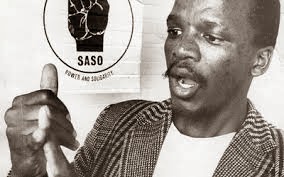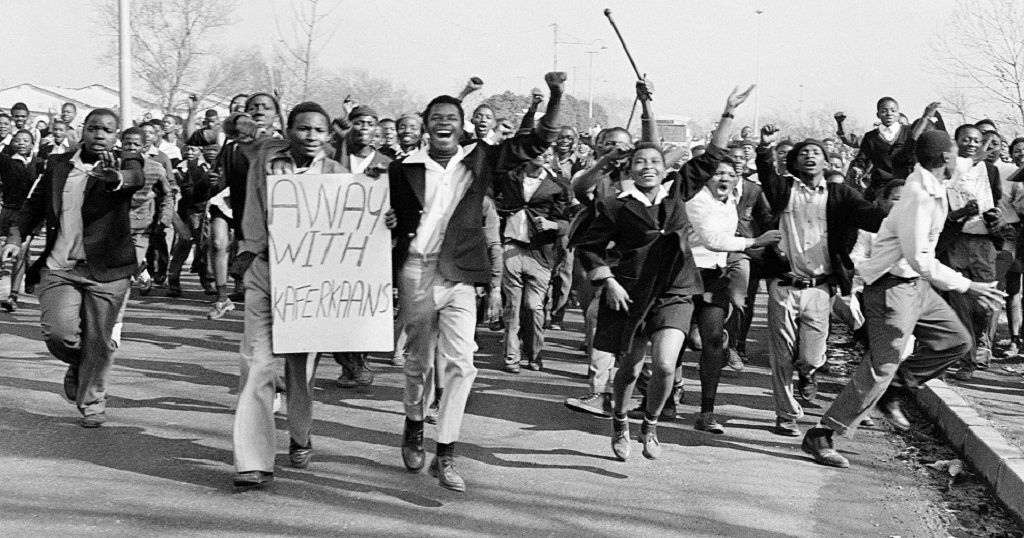The challenge to every Black graduate in this country lies in the fact that the guilt of all wrongful actions in South Africa, restriction without trial, repugnant legislation, expulsions from schools, rests on all those who do not actively dissociate themselves from and work for the eradication of the system breeding such evils. To those who wholeheartedly support the policy of apartheid I say: Do you think that the White minority can willingly commit political suicide by creating numerous states which might turn out to be hostile in the future? We Black graduates, by virtue of our age and academic standing are being called upon to bear greater responsibilities in the liberation of our people. – Onkgopotse Abram Tiro, 1972.
Onkgopotse Abram Tiro was a black South African activist who spent his very short but meaningful life protesting against the Apartheid system in South Africa for the benefit of Blacks and most importantly the new generation to develop a sense of solidarity, unity and a will to fight for their rights.
His unashamed and proud speeches and protest would later pose a threat to the Apartheid government which would eventually cost him a lot. Nevertheless, his name resonates in the minds of many and causes a sense of pride, courage and determination deeply etched in the history of Black South Africa and its Apartheid years as well as several black movement groups.

Born on November 9, 1945, in a small village of Dinokana in the North West province of South Africa, Onkgopotse grew up in a relatively small and dominantly agricultural village where he received a good education and excelled in school. During his time in school, he grew an interest in Black consciousness and emancipation.
During his younger years, Onkgopotse witnessed the harsh effect of the Apartheid system in his home country and how it was affecting the lives of many blacks and depriving the youth of their rights and privileges as rightful South Africans. With the knowledge he acquired from in-depth reading on Black Consciousness and emancipation through thought and action, Onkgopotse came to the conclusion that the only way out of the Apartheid was through getting the youth to know about the power of their voice.
After high school, he gained admission into the University of the North, Turfloop, now known as the University of Limpopo and immediately immersed himself in black youth movements speaking to his colleagues such as Steve Biko on the importance of protesting and using their power to fight Apartheid. Through dedication and passion, he steered up a fire in the youth on several campuses in South Africa which gained the attention of the government.

In 1972, he was elected as the SRC President in Turfloop and was to use his power for a student protest. Onkgopotse’s plan was that, during the graduation ceremony of 1972, he would deliver a speech that would criticize the Bantu Education Act of 1953; his plans were successful and his speech caused a stir in the whole of the country and later led to his expulsion from the university.
Onkgopotse’s expulsion from school caused a stir in South Africa leading to several solidarity protests by students from different universities in South Africa demanding for his re-admission but he was stopped from continuing his education.

After a while, he was offered a teaching job at Morris Isaacson High School in Soweto by Mr. Lekgau Mathabathe, the principal at the time. During his day as a teacher, he went on to train the youth to gain a mind of consciousness and bravery that would lead them to find pride in their black skin and fight for their own. It is through him and his teachings that the Black Consciousness Movement grew and later led to the 1976 Youth Uprising.
Unable to resist pressure from the apartheid government, Mr. Lekgau Mathabathe was forced to sack Onkgopotse who went ahead to live in a Roman Catholic Mission at Khale where he spent his time forming militant revolutionary groups.
After several threats of arrest from the government, Onkgopotse fled to Botswana in 1973 where he immediately opted to continue his education at the University of South Africa (UNISA). While in Botswana, he continued his work for organisations such as the South African Student Movement (SASM), Saso and the Black People’s Convention (BPC).

On February 1, 1974, Onkgopotse was completing his UNISA application when he received a parcel from the International University Exchange Fund (IUEF) which exploded immediately he opened it killing him instantly.
The parcel was later identified as a parcel bomb meant for him and sent by the Z-Squad, a Bureau of State Security (BOSS) covert unit under the White Apartheid government. This was revealed in Inside Boss, a book written by Gordon Winter, a spy for the Apartheid Government.

Although he died at the young age of 29, Onkgopotse was considered a man way older than his years and his time. Several books and movies have been made in his honor and he has been named the Father of Black Consciousness and Youth Protest in South Africa. His influence was felt in Swaziland as well as Botswana.
Onkgopotse Abram Tiro was finally laid to rest on March 22, 1998, after the remains of his body were received by his family on March 20, 1998. No investigations to his death have been carried out to date.











